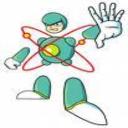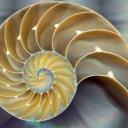PHYS 101 Lecture Notes - Lecture 18: Angular Momentum, Momentum, Angular Acceleration

PHYS 101 Full Course Notes
Document Summary
Get access


Related textbook solutions
Related Documents
Related Questions
Purpose:
In this lab, you will make some basic measurements of friction.You will measure the coefficients of staticfriction between several combinations of surfaces using aninclined plane, and you will measure the coefficient ofkinetic friction between two of the combinationsof surfaces you used in the static friction part of thisexperiment.
Part 1: StaticFriction
Theory:
The coefficient of static frictionms can be measured experimentally foran object placed on an inclined plane (a.k.a. ramp, a.k.a. hill).The coefficient of static friction is related to the criticalangle qc for the ramp, at whichthe object just begins to slide. Using what we havecovered in class, you can derive this relationshipyourself! At this critical angle, static friction preventing theobject from sliding down the hill is just exactly equal to thecomponent of the objectâs weight along the hill. If the componentof the weight along the hill were just a little greater, it wouldovercome friction, and the object would start to slide down. Thefree body diagram for this situation will look like the figuresketched below. Use this diagram to find an equation that relatesms toqc.
FN = NormalForce = mg cos(θ) |
FF =μs x FN = μs mg cos(θ) |
ΣFx = mAx = FGx - FF = ? |
FGx = mgsin(θ) |
Hint #1: the angle q of the incline is the same as theangle between the normal force N and the weightmg. Why?
Hint #2: The weight mg can be broken into twocomponents. One component is along the incline(WH). The other component is âpressinginto the hillâ, and is equal in magnitude to the normal forceN. (This is an example of a situation where the normalforce is not equal to the weight!) Remember that you need to usethe normal force to calculate friction, sincef=mN. Now calculate what the angle ofthe incline should be, so that the component of the weight down thehill is just exactly balanced by friction.
Equipment:
For this lab you will need to share the following ramps andblocks with other lab groups:
Ramps Blocks
Aluminum Aluminum
ParticleBoard Brass
StainlessSteel Plexiglass
Plastic Copper
Rubber
Steel
Wood
Experiment:
Test at least 5 different combinations of materials. Record thematerial of the block and the ramp for each combination.
1. Measure and record the length of theinclined plane you will be using. (This is thehypotenuse of the right triangle!)
2. Place the block on the plane and begin tiltingthe plane just until the point when the block begins to slide.
3. Measure the height of the raisedend of the inclined plane at this point. (This is theopposite side of the right triangle!) You cancalculate the angle from the measurements of the two sides.
4. Repeat the height measurement at least 3 timesfor each combination of materials. Record all the measurements inthe table below. Then,
(a) calculate the angle from the measurements of the hypotenuseand opposite side you just obtained
(b) use the equation you derived above in order to calculate thecoefficient of kinetic friction from the angle.
Block: woodenblock Block: cooper
Ramp:particleboard Ramp: particle board
Length of ramp:0.61(m) Length of ramp: 0.61(m)
Height(m) | Ѳ | Ms | Height(m) | Ѳ | Ms | |
0.24 | 0.26 | |||||
0.25 | 0.31 | |||||
0.245 | 0.345 |
avg ms: ______ s : _______ avg ms: ______ s : _______
Block:aluminum Block:particle board block
Ramp: solidewood Ramp: solide wood
Length of ramp:0.605(m) Length of ramp: 0.605(m)
Height(m) | Ѳ | s | Height(m) | Ѳ | s | |
0.15 | 0.23 | |||||
0.16 | 0.165 | |||||
0.16 | 0.195 |
avg ms: ______ s : _______ avg ms: ______ s : _______
5. Remember that in class we said that friction does not dependon surface area. You can easily test whether or not this iscorrect. Choose a block/ramp combination not already tested, andmake sure the block is not a cube or cylinder. Place the block sothat the side with the larger surface area is in contact with theboard. Now measure the angle at which the block just begins toslide (by measuring the hypotenuse and opposite sides of thecorresponding right triangle). As before, calculate the coefficientof friction from the angle you measured, using your equation.Repeat this process with the side of the block with the smallersurface area in contact with the board. Enter this data in thesmall tables below.
Block (larger end) :_________ Block (smaller end):__________
Ramp:_______________ Ramp: ________________
Length of ramp:______(m) Length of ramp: ______(m)
Height(m) | s | Height(m) | s | |||
avg ms: ______ s : _______ avg ms: ______ s : _______
Part 2: KineticFriction
Theory:
You can calculate the coefficient of kinetic friction,mk, using a variation of the methodyou used for the coefficient of static friction. For thecoefficient of kinetic friction, you can use the same free bodydiagram as the one drawn on the first page. But now, thecombination of WH and the force offriction will need to add up such that the block will slide at aconstant speed. Think of Newtonâs first and second laws when youset up this equation. Derive a relationship between the criticalangle and the coefficient of kinetic friction.
Experiment:
You can measure mk using aprocedure similar to the one you used to measurems. This time, just pick twocombinations of materials. The combinations you pick for this partof the experiment have to be combinations you alreadyused for the static friction part of the experiment, because thepoint is to compare msandmk!
1. Measure and record the length ofthe inclined plane you will be using.
2. Raise the plane high enough for the blockto begin moving. Begin lowering the plane just until the pointwhen the block begins to slow down. (Alternatively, raise theboard while tapping the block until block moves at a constantrate.)
3. Measure the height of the raisedend of the inclined plane at this point.
4. Repeat the height measurement at least 3times for each combination of materials. Record all themeasurements in the table below. Then,
(a) calculate the angle from the measurements of the hypotenuseand opposite side you just obtained
(b) use the equation you derived above in order to calculate thecoefficient of kinetic friction from the angle.
Block (from part 1) :_________ Block (from part 1):__________
Ramp:_______________ Ramp: ________________
Length of ramp:______(m) Length of ramp: ______(m)
Height(m) | k | Height(m) | k | |||
avg mk: ______ s : _______ avg mk: ______ s : _______
Analysis:
Calculate the mean value and standard deviation of thecoefficient of static friction that you measured, for each set ofmaterials.
| ramp/board pair | Standard deviation | |
(larger end) | ||
(smaller end) |
Calculate the mean value and standard deviation of thecoefficient of kinetic friction that you measured, for each set ofmaterials.
| ramp/board pair | Standard deviation | |
Questions:
1. How do the values of ms compareto the values of mk? (Of course, youcan only compare them for the same pairs of materials.)
2. Is the relationship betweenmsand mkwhat you expected?
3. Of the two parts of the experiment, measurement ofmsand measurement ofmk, which had more sources of error?What were some of the sources of error?
4. Could mk orms ever be greater than 1? Explain whyor why not.
5. Is the coefficient of friction the same as when the block wasstanding on its larger (or smaller) end?
6. Think about your results. Do they make sense when youconsider your everyday experiences?





